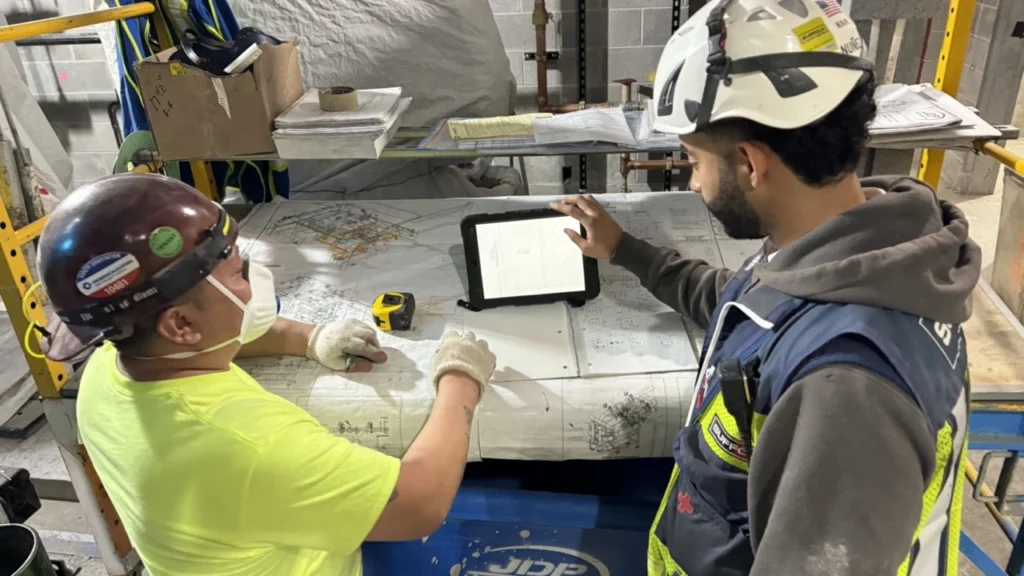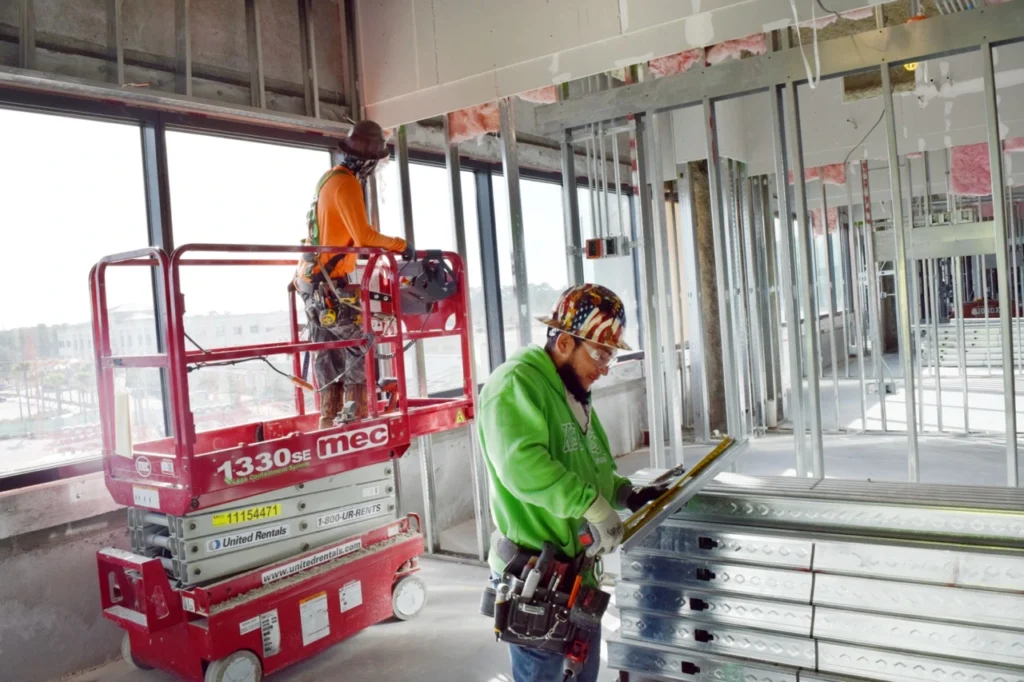
Why It’s Time to Rethink Digital Transformation
Imagine the “future of construction.” Do you see drones tagging completed work for an automated schedule update, robots moving materials based on their understanding of upcoming site work, or humans analyzing predictive models on their transparent tablets?
Most people imagine the future in terms of advanced technology. But beneath this layer of technology lies a critical, yet frequently invisible, network of processes and people. This foundational network—often underestimated and sometimes undervalued—truly powers our industry’s digital transformation.
Putting people and processes first is a new way of thinking about innovation. We’re used to framing advancement in terms of technological innovation: the wheel, the printing press, the steam engine, electricity, the internet, the smartphone, etc.
In contrast, digital transformation in construction today is best defined by the developers, designers, project teams, and journeymen harnessing the power of existing technologies to augment their craftsmanship at scale and address the most urgent problems in the industry today.
What Is Digital Transformation?

As we dig into the drivers behind this transformation, it would be easy to think of digital transformation in “Industry 4.0” terms. However, our industry of craftsmen requires a more nuanced definition.
Yes, “digital transformation” refers to integrating advanced technologies and practices into the building process. However, it should also be defined by the outcomes it enables for efficiency, safety, and quality. Digital transformation’s outcomes include:
- De-risking the physical job site to achieve high-quality and low-risk builds
- Enhancing the craftsmanship of the end product
- Increasing the quality of life of the people who build our world
- Allowing us to build amazing things at a scale and pace that accurately reflect the ingenuity of our project teams
Simply put, digital transformation involves seamlessly integrating technology with people and processes within workflows, fostering an environment that consistently achieves desired outcomes. We can measure success as the fidelity of information flowing between stakeholders and the end user’s ability to consume that information in a frictionless environment.
Why Is Digital Transformation Necessary?

More than 40% of the construction workforce is set to retire in the next decade. With a lack of new workers to take their place, the industry urgently needs solutions for knowledge transfer that don’t rely on traditional person-to-person recordkeeping.
When construction workers leave, about 42% of their knowledge is only known to them, and once the company looks to replace that departed worker, they use around 150-200% of that person’s salary to find their replacement.
Around 90% of construction industry professionals surveyed by Asite said digital tools are vital for project success. But digital tools alone won’t resolve the industry’s challenges. Without processes in place that leverage all the data we create, we will only contribute to the dark data problem that plagues our industry.
Balancing People, Process, and Technology

Digital transformation is a journey, not a destination. It starts with cultivating a culture that values continuous learning and adaptation, where employees are empowered to integrate new tools into their workflows. For example, digital transformation in aviation means balancing ESG commitments with BIM and digital twin technology to overcome issues in budget complexity and change management.
Our industry must re-evaluate processes through the lens of how well they leverage existing technologies and how well the data stream that technology creates is curated for the needs of the organization. Choosing technologies based on their ability to integrate seamlessly into a workflow with the people, processes, and existing technologies already in that workflow.
Point solutions are not dead—but they need to deliver holistic pictures of the outcomes they serve, breaking down the silos across different industry demographics.
By focusing on getting the basics right and thinking through the people, processes, and technologies required to achieve desired outcomes, construction companies can navigate the path of digital transformation and avoid the pitfalls of “shiny objects” at the expense of foundational growth.
VIATechnik Can Lead Your Digital Transformation

Transforming your business in the ways described can be daunting. That’s why developing the right industry partnerships with subject matter expertise makes a difference. Whether you need help managing a VDC process or deliverable, crafting a building information modeling strategy for an owner requirement, or developing an integration between two siloed technologies, we can help.
At VIATechnik, we sit at the intersection of BIM software and service to help you bridge the gap and make the most of your digital investments. By transforming your workflows and implementing solutions, we can help ensure you capture the right data, enable the most valuable insights, and drive success at every step.
We will meet your teams where they are today and drive practical, iterative change toward your goals.
Contact us today to learn more about how we can support your digital transformation goals.
Stephen Poppe, Strategic Client Manager, VIATechnik



